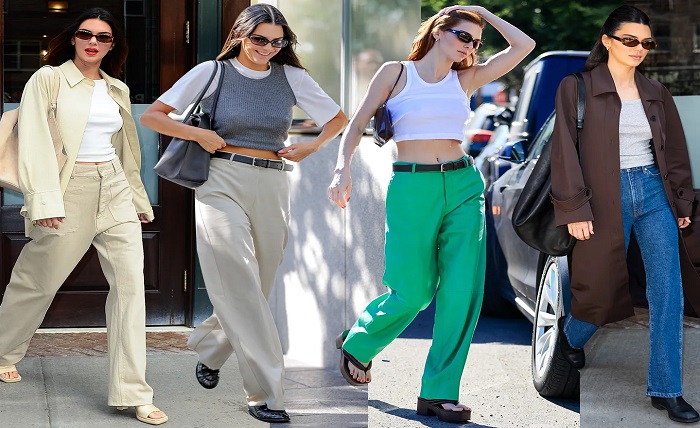
When it comes to fashion, style is everything. It’s the way we express ourselves, the way we make a statement, and the way we stand out from the crowd. But what exactly is style? And how has it evolved over the years?
The 1920s were a time of great change and experimentation in fashion. The end of World War I brought about a new sense of freedom and liberation, and this was reflected in the clothing of the time. Hemlines rose, corsets were abandoned, and women began to embrace a more masculine look. The iconic flapper dress, with its dropped waist and fringe, symbolized this new sense of freedom and rebellion.
The 1930s, on the other hand, were a time of austerity and simplicity. The Great Depression had a major impact on fashion, and many people could no longer afford luxury items. As a result, clothing became more functional and practical. Dresses were made out of simple, inexpensive fabrics like cotton and linen, and the focus was on clean lines and minimal ornamentation.
The 1940s saw a return to more feminine styles, as World War II came to an end and women began to enter the workforce in large numbers. Dresses became more form-fitting and tailored, and the iconic “New Look” silhouette, characterized by a narrow waist and full skirt, became popular. This decade also saw the rise of the “little black dress,” which remains a fashion staple to this day.
The 1950s was a time of prosperity and optimism, and fashion reflected this. Dresses were made out of luxurious fabrics like silk and satin, and the iconic “Swing” dress became popular. This decade was also characterized by a focus on femininity, with full skirts, cinched waists, and high heels becoming the norm.
The 1960s was a time of great change and experimentation, both in fashion and in society as a whole. The rise of the youth culture and the counterculture movement led to a rejection of traditional styles and a focus on individuality. Clothing became more colorful, eclectic, and expressive, and the iconic “Mod” look, characterized by bold geometric patterns and short, shift dresses, became popular.
The 1970s was a time of experimentation and diversity in fashion. The rise of the feminist movement led to a rejection of traditional gender roles and a focus on androgynous styles. The iconic “Bohemian” look, characterized by long, flowing dresses and ethnic-inspired patterns, became popular. This decade also saw the rise of denim, which remains a fashion staple to this day.
The 1980s was a time of excess and conspicuous consumption, and fashion reflected this. Clothing became more flashy and glamorous, and the iconic “Power Dressing” look, characterized by sharp suits and bold colors, became popular. This decade also saw the rise of streetwear and the emergence of hip hop as a major influence on fashion.
The 1990s was a time of minimalism and simplicity, in contrast to the excess of the 1980s. The iconic “Grunge” look, characterized by ripped denim and flannel shirts, became popular. This decade also saw the rise of sportswear and streetwear as major influences on fashion, and the emergence of “street style” as a major trend.
The 2000s was a time of nostalgia and a renewed appreciation for classic styles. The iconic “Retro” look, characterized by vintage-inspired clothing and accessories, became popular. This decade also saw the rise of fast fashion and the emergence of social media as a major influence on fashion. With the advent of platforms like Instagram and Pinterest, fashion became more accessible and democratic, allowing people to share their personal style and gain inspiration from others.
The 2010s saw a continued focus on individuality and self-expression in fashion. The rise of the “influencer” culture and the continued growth of social media led to a more personal and curated approach to fashion. Street style became a major trend, and the concept of “normcore” – an embrace of simplicity and minimalism – became popular.
Today, style is more diverse and inclusive than ever before. With the rise of sustainable and ethical fashion, consumers are becoming more conscious of the impact of their clothing choices on the environment and society. And with the ongoing digitalization of the fashion industry, consumers have more access to fashion than ever before.
Style is an ever-evolving concept that reflects the cultural and social changes of the time. From the flapper dresses of the 1920s to the street style of today, fashion and trends have changed over the years, but the desire to express ourselves and make a statement remains the same. As fashion continues to evolve, we can expect to see even more diversity and inclusivity in the years to come.




